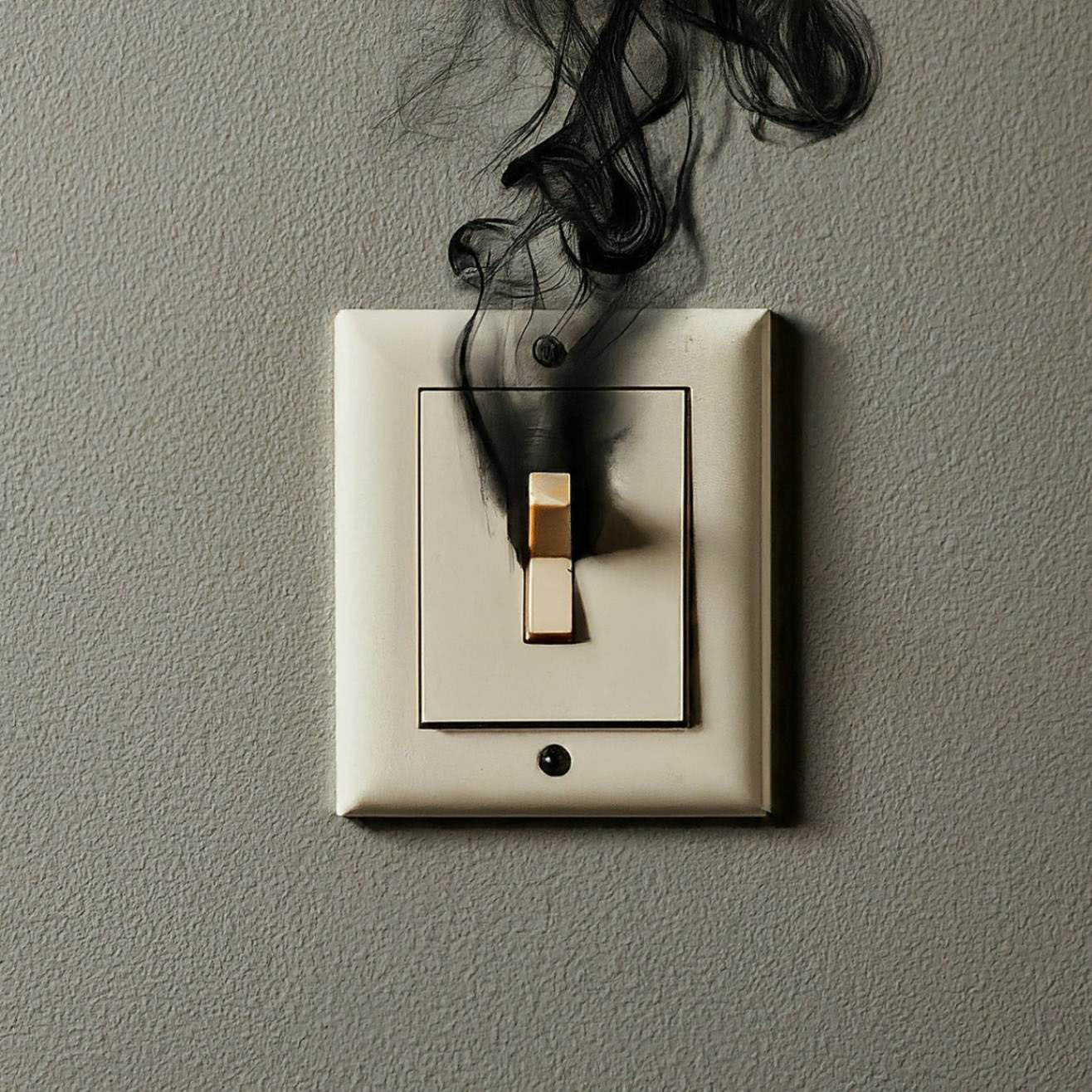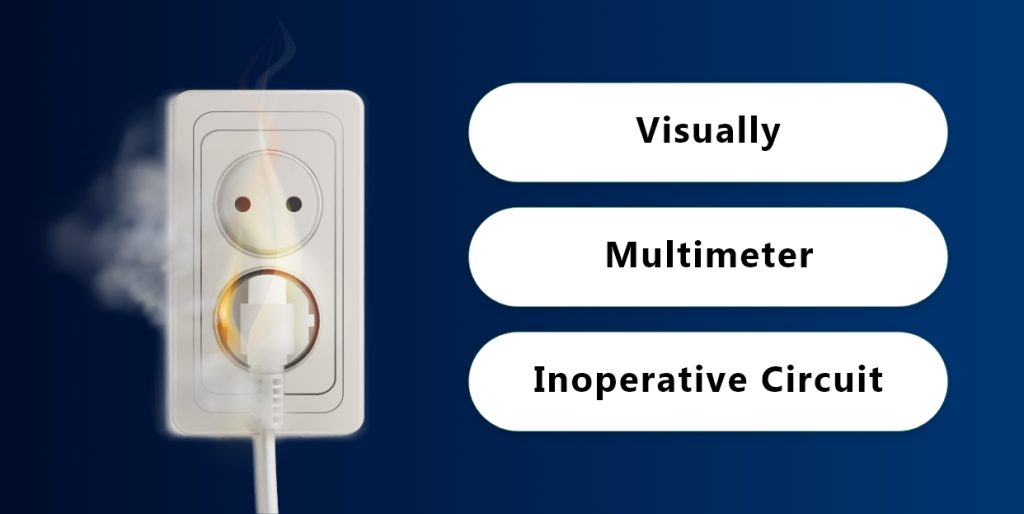 Last updated: July 30th, 2024
Last updated: July 30th, 2024
What Does A Blown Fuse Look Like? How To Fix It?

Fuses, those unsung heroes of the electrical world, silently safeguard your circuits from harm. But how do you know when a trusty fuse has reached the end of its line? This comprehensive guide delves into the telltale signs of a blown fuse, explores the technical reasons behind fuse failure, and equips you with the knowledge to identify and address these electrical hiccups.
Identifying a Blown Fuse: The Signs
While a blown fuse might not announce its demise, there are several ways to identify the culprit:

- Visually: In many fuses, a thin filament or wire within a glass enclosure melts or breaks when excessive current flows through it. If you can see a broken or melted filament inside the glass enclosure, that’s a clear indication of a blown fuse. (Safety Note: Always turn off the power before inspecting fuses.)
- Multimeter: For fuses that lack a transparent window, a multimeter set to continuity mode can be your trusty detective tool. Touch the multimeter probes to the two terminals of the fuse. The fuse is likely blown if the multimeter displays no reading (infinite resistance).
- Inoperative Circuit: The most common giveaway might be the lack of power in the affected circuit. If appliances or lights controlled by a specific circuit stop functioning simultaneously, a blown fuse could be the reason.
Here is a detailed note on how to identify a blown fuse using the above methods:
The Visual Detective: Spotting Blown Fuses with the Naked Eye
While some methods require tools, a keen eye can often reveal a blown fuse without needing anything more than a screwdriver (to turn off the power) and basic observation skills:
- The Glass Fuse: These classic fuses have a transparent glass enclosure that allows for visual inspection of the element inside. Look for a broken filament or a melted section within the glass tube. The fuse is likely blown if you see such a disruption in the element’s continuity.
- The Non-Transparent Fuse: Some fuses, like ceramic or certain cartridge fuses, cannot be directly inspected. However, some non-transparent fuses might have a small window on one end that allows you to see a colored indicator. If the indicator has changed color or appears blown, it could signify a blown fuse. Consult your fuse manufacturer’s specifications for specific details on interpreting the indicator color.
- Technical Details: Remember, a fuse element is designed to be the weakest link in the circuit. When excessive current flows through the circuit, this fusible element (usually a thin wire or filament) heats up. In a healthy fuse, this heat is controlled. However, in a blown fuse, the heat becomes excessive, causing the element to melt or break, creating an open circuit and stopping the current flow.
The Multimeter Method: A Measured Approach
A multimeter becomes your reliable detective tool if a visual inspection isn’t conclusive or the fuse lacks a transparent window. Here’s how to leverage its power:
- Safety First: Ensure the power is off at the breaker box before proceeding.
- Multimeter Settings: Set your multimeter to continuity mode. This mode checks for a complete circuit with minimal resistance.
- Probe Placement: Touch the multimeter probes to the two metal terminals of the fuse. Ensure good contact for an accurate reading.
- Interpreting the Results: If the multimeter displays a reading (close to 0 ohms), the circuit is complete, and the fuse is likely good. Conversely, if the multimeter shows no reading (infinite resistance), it signifies an open circuit, and the fuse is likely blown.
- Technical Details: A multimeter measures resistance, which opposes the flow of current in a circuit. The element offers minimal resistance in a functional fuse, allowing current to flow freely. However, the broken or melted element creates an infinitely high resistance path in a blown fuse, preventing current flow and registering as “no reading” on the multimeter’s continuity mode.
Circuit Inactivity: The Silent Scream for Help
Sometimes, the most glaring sign of a blown fuse isn’t the fuse itself but the lack of electrical activity in the affected circuit. Here’s how to interpret this electrical silence:
- Sudden Power Loss: If a group of appliances or lights controlled by a specific circuit all stop working simultaneously, it could indicate a blown fuse protecting that circuit.
- Partial Power Loss: In some cases, only a single appliance or light might be affected. However, if it’s the only device on that particular circuit, a blown fuse remains a strong possibility.
- Technical Details: When a fuse blows due to overload, short circuit, or ground fault, it intentionally creates an open circuit. This open circuit disrupts the current flow to the downstream components (appliances and lights) on that circuit. Consequently, these components are deprived of the electrical power they need to function, resulting in the observed power loss.
Why Fuses Fail: The Culprits
Several factors can contribute to a fuse blowing:
- Overload is the most common culprit. When too many appliances or devices are plugged into a single circuit, the total current draw can exceed the capacity and fuse rating. This overload triggers the fuse to blow, preventing damage to the wiring and potentially a fire.
- Short Circuit: A short circuit occurs when there’s an abnormal connection between the “live” and “neutral” wires in a circuit. This creates a path of very low resistance, allowing a surge of current to flow. Fuses are designed to respond to surges and blows to safeguard the circuit.
- Ground Fault: A ground fault happens when a live wire makes unintended contact with a grounded surface, such as a metal conduit or a grounded appliance chassis. This can also cause a surge in current and trip the fuse.
- Defective Fuse: In rare instances, the fuse itself might be faulty. A manufacturing defect or a degraded fuse element due to age can lead to a premature blow, even under normal current conditions.
How To Keep Your Circuits Safe & Sound: Protective Measures
Electrical circuits are the invisible arteries of your home, silently supplying the power that keeps your appliances humming and lights glowing. But just like any vital system, electrical circuits require care and attention to function safely and efficiently.

Here’s a comprehensive guide packed with valuable strategies to keep your circuits safe and prevent electrical woes:
Guarding Against Overloads
- Appliance Awareness: Be mindful of your appliances’ power consumption. Consult user manuals or appliance labels to understand their wattage ratings. This knowledge allows you to strategically distribute the load across different circuits to avoid overloading any single one.
- Power Strip Prudence: Power strips provide convenient outlets, but don’t treat them like limitless power sources. Avoid plugging high-wattage appliances (like space heaters or hair dryers) into a single power strip, and resist overloading it with numerous devices.
- Unplug When Unused: Even switched-off appliances can draw a phantom load when plugged in. Make it a habit to unplug electronics and chargers when not in use. This small step can significantly reduce the overall load on your circuits.
The Importance of Circuit Breakers & Fuses
- Understanding Circuit Breakers: Many modern homes have circuit breakers instead of fuses. These resettable devices automatically trip (cut off power) when a circuit becomes overloaded. If a breaker trips, identify the culprit appliance, unplug it, and then reset the breaker. However, frequent tripping might indicate a chronic overload or a faulty circuit, necessitating the attention of a qualified electrician.
- The Role Of Fuses: You might still encounter fuses in older homes or for specific circuits. These expendable devices contain a filament that melts or breaks when excessive current flows through the circuit. A blown fuse indicates an overload or short circuit. Always replace a blown fuse with the same rating, and never attempt to bypass a blown fuse – it’s there for your safety.
Preventive Maintenance Is Key
- Schedule Electrical Inspections: Regular electrical inspections by a qualified professional are vital for proactive circuit safety. Electricians can identify potential problems like loose wiring, faulty outlets, or overloaded circuits before they cause issues. Think of it like a routine checkup for your electrical system.
- Visual Inspection: Regularly inspect your outlets and plugs for signs of damage or scorching. Look for discoloration, cracks, or frayed wires. Such signs indicate potential problems that need to be addressed by a qualified electrician. Don’t wait for a spark to catch your attention!
- Grounding Matters: Ensure all three-prong plugs are correctly grounded. Grounding provides a safe path for any stray current to flow, preventing electrical shock. If you need clarification on grounding, consult a qualified electrician.
Addressing Moisture & Heat
- Water Woes: Water and electricity are a dangerous mix. Avoid using appliances near water sources, and immediately address any leaks around electrical outlets or wiring. Moisture can damage wiring and increase the risk of electrical shock.
- Heat Buildup: To prevent overheating, keep appliances and electronics well-ventilated. Don’t cover electronics vents; avoid cramming too many appliances into a tight space. Overheating can damage both the appliances and the wiring.
Beyond the Basics: Additional Safety Tips
- Beware of DIY Electrical Work: Unless you’re a qualified electrician, resist the urge to tackle electrical repairs yourself. Electrical work requires expertise and proper safety gear. Leave it to the professionals to ensure your safety and the integrity of your circuits.
- Invest in Surge Protectors: Surge protectors safeguard your valuable electronics from voltage spikes that can damage delicate circuitry. Plug your electronics into surge protectors for added peace of mind.
By following these comprehensive strategies, you can create a culture of electrical safety in your home. Remember, a little vigilance and proactive measures go a long way in safeguarding your circuits, preventing electrical hazards, and ensuring the smooth flow of power that keeps your home comfortable and functional.
Home Warranty and Blown Fuses: Understanding Coverage and When to Call a Professional
A blown fuse is a minor electrical issue, but it can disrupt your daily routine and leave you wondering if your home warranty covers a replacement. This guide explores the intricacies of home warranty coverage for blown fuses, helping you navigate this situation effectively.
Understanding Home Warranties
Home warranties are service contracts that offer protection against unexpected breakdowns of major home systems and appliances. They typically cover repairs or replacements of covered items due to mechanical failure or normal wear and tear.
Blown Fuses & Coverage
The coverage for blown fuses by home warranties can vary depending on the specific plan and provider. Here’s a breakdown of what to expect:
- Generally Not Covered: A blown fuse is not covered by a home warranty in most cases. Fuses are considered consumable items, and replacing one is a relatively simple and inexpensive homeowner responsibility.
- Underlying Electrical Issues: However, if the blown fuse is a symptom of a larger electrical problem, your home warranty might offer coverage for diagnosing and repairing the root cause. This could include issues like faulty wiring, overloaded circuits, or malfunctioning appliances that caused the fuse to blow.
Keeping the Power On: A Final Word on Blown Fuses
Fuses, those tiny sentinels within your electrical system, play a crucial role in safeguarding your circuits and preventing potential fire hazards. By understanding the telltale signs of a blown fuse, you can effectively troubleshoot electrical issues in your home. However, it's important to remember that safety is paramount.
For simple fuse replacements, refer to this guide's instructions to identify a blown fuse and ensure you use the correct replacement. But if you need clarification on any aspect of your electrical system or encounter more complex electrical problems, always avoid caution and consult with a qualified electrician.
A licensed electrician has the expertise and tools to diagnose electrical issues and implement safe and lasting solutions accurately. With a proactive approach to electrical safety and the knowledge from this article, you can keep your home's electrical system functioning smoothly and ensure a bright and hazard-free future for your loved ones.
related articles
 Discover First American Home Warranty Locations and What You Need to Know About Their Cover.
Discover First American Home Warranty Locations and What You Need to Know About Their Cover.
 Reviews of Home Warranty Companies Show You How to Determine If Your Home Is Covered
Reviews of Home Warranty Companies Show You How to Determine If Your Home Is Covered











